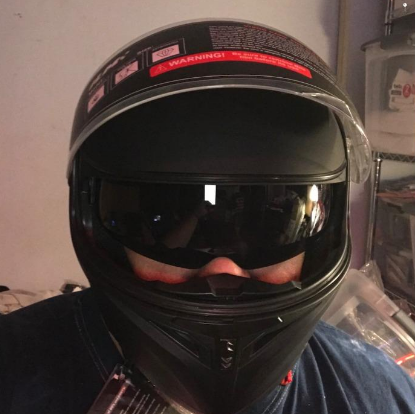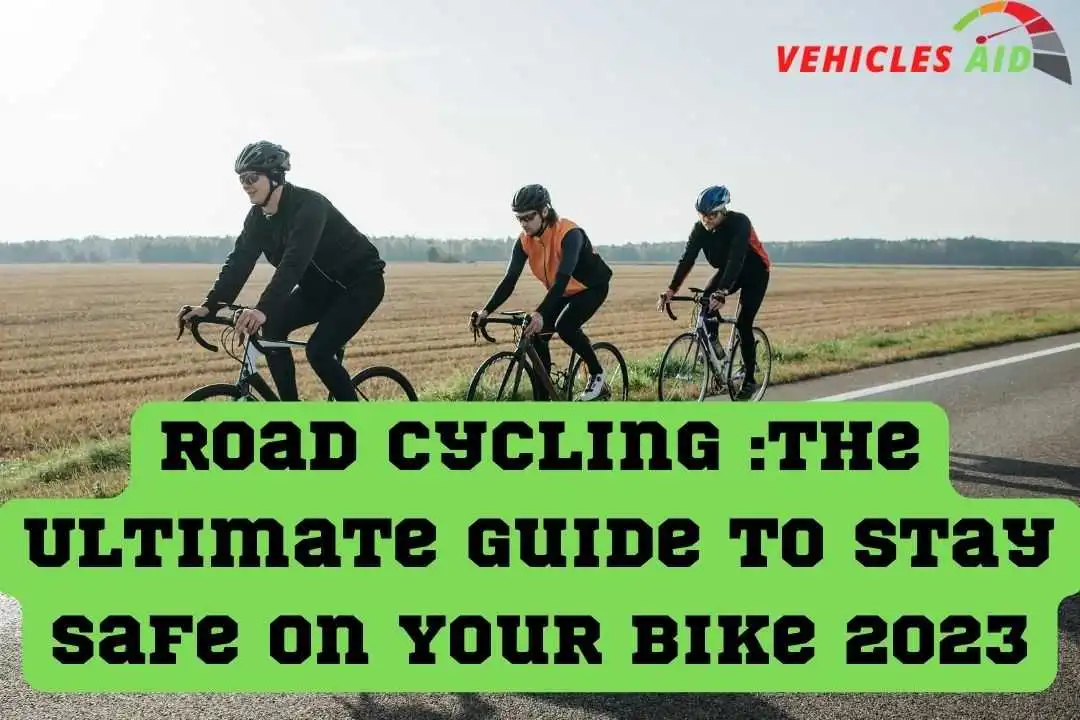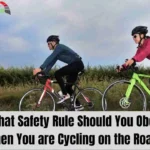Road Cycling is one of the most popular outdoor activities and is enjoyed by people of all ages. Whether you’re a seasoned cyclist or just starting out, road cycling can be a fun and challenging way to get some exercise, explore the great outdoors, and enjoy the scenery.
But with so many different aspects to consider, it can be overwhelming to know where to start. That’s why we’ve created “The Ultimate Guide to Road Cycling,” to help you understand everything you need to know about this exciting sport.
This comprehensive guide covers all the essential elements of road cycling, including the right gear, training and nutrition, safety, and more. Whether you’re looking to improve your cycling performance, take on longer rides, or simply enjoy the sport for its own sake, you’ll find valuable information and practical advice in this guide.
So, whether you’re a seasoned pro or just starting out, “The Ultimate Guide to Road Cycling” is the perfect resource for anyone looking to get the most out of this exciting sport. So grab your helmet, pump up your tires, and let’s hit the road!
Everything You Need To Know If You’re New To Road Cycling
Whether you’re new to cycling or just getting back into it after a long break, there are some important things to keep in mind before hitting the road. Here are a few tips to help you stay safe and enjoy your ride:
1. Wear the right gear. Make sure you have a good quality helmet that fits properly and wear bright clothing so you’re visible to drivers.
2. Follow the rules of the road. Just like when you’re driving a car, pay attention to traffic signs and signals and yield to pedestrians.
3. Be aware of your surroundings at all times. Keep an eye out for potholes, debris, and other hazards that could cause you to lose control of your bike. And be extra cautious when riding near parked cars – doors can open unexpectedly!
4. Ride with traffic, not against it. This will help drivers see you more easily and give them plenty of time to react if they need to change course around you.
5. Use hand signals when turning or stopping. Again, this will help drivers know what you’re doing so they can adjust accordingly. With these guidelines in mind, you should be able to hit the road with confidence!
Just remember to take things slowly at first until you get used to riding in traffic. And always err on the side of caution – it’s better to be safe than sorry.
Cycling for Beginners Training Plan
If you’re new to cycling, the thought of heading out on a road ride or hopping on your bike at the gym can be intimidating. But with a little preparation and know-how, anyone can start reaping the benefits of this low-impact, calorie-burning workout. To help get you started, we’ve put together a beginner’s training plan for cyclists.
This 8-week plan incorporates both indoor and outdoor rides, along with some strength training to help build muscle and endurance. And since we want you to stay safe while you’re cycling, we’ll also give you some tips on how to avoid common mistakes beginners make. So grab your helmet and water bottle, and let’s get started!
Road Biking for Beginners
Road biking is a great way to get outdoors and enjoy some fresh air while getting some exercise. It can be a bit daunting for beginners, though. Here are some tips to help you get started:
1. Get the right bike. You don’t need an expensive road bike to start out, but you do want one that’s comfortable and fits well. A good bike shop can help you find the right size and type of bike for your needs.
2. Get the right gear. In addition to a bike, you’ll need a helmet, gloves, and comfortable clothing that won’t chafe as you ride. Again, your local bike shop can help you find what you need.
3. Learn the basics of riding before hitting the open road. Spend some time in a park or on a quiet side street practicing braking, turning, and shifting gears before heading out onto busier roads.
4. Be visible and predictable when riding on the roadways. Wear bright clothing so drivers can see you, and always ride in the direction of traffic (not against it!). Use hand signals to indicate when you’re turning or stopping so drivers know what you’re doing.
5 Road biking is more fun with friends! Find a group of beginner cyclists to ride with, or join a local cycling club. Not only will it make riding more enjoyable, but it’s also safer since there will be more eyes on the road watching out for hazards.
Bike Riding Tips for Beginners
Bike riding is a great way to get around, but it can be intimidating if you’ve never done it before. Here are some tips to help you get started:
1. Choose the right bike. There are many different types of bikes available, so it’s important to choose one that’s suited for the kind of riding you want to do. If you’re planning on doing mostly paved riding, a road bike or hybrid bike might be best for you. If you want to ride off-road, a mountain bike would be a better choice.
2. Get fitted for your bike. Once you have your bike, make sure it’s properly sized for you and that all the components are adjusted correctly. This will make riding more comfortable and reduce the risk of injury.
3. Start slow and practice in a safe place. Don’t try to tackle too much too soon – start with short rides in an area with little traffic where you feel comfortable practicing your skills. As you become more confident, you can gradually start venturing out onto busier roads and longer distances.
Road Cycling Rules
Road cycling is a great way to see the world and get some exercise, but it’s important to know the rules of the road before you hit the pavement. Here are a few key things to keep in mind when you’re cycling:
1. Ride on the right side of the road.
This will help you avoid traffic and stay safe.
2. Obey all traffic laws, including stop signs and yield signs.
3. Use hand signals to communicate with drivers and other cyclists around you.
4. Wear bright clothing so that you’re visible to others on the road.
5. Always wear a helmet when riding, no matter how short your trip may be!
Road Biking Vs Cycling
There are many similarities between road biking and cycling, but there are also some key differences. Here’s a look at both sports to help you decide which one is right for you. Road biking is done on, you guessed it, roads!
This means that the surface you’ll be riding on is usually much smoother than what you’ll find on trails or another off-road terrain. Road bikes also tend to be lighter and more nimble than their mountain bike counterparts, making them easier to handle on tight turns and hills. However, road biking can be a bit more challenging than cycling since there are often more cars on the roadways.
This means that you’ll need to be extra cautious of your surroundings and make sure to follow all traffic laws. You’ll also want to invest in some good quality gear, like a helmet, gloves, and reflective clothing, to help keep yourself safe while riding. Cycling, on the other hand, can take place both on and off road.
So if you’re someone who likes variety in your workout routine or enjoys exploring new trails, then cycling might be the sport for you. Mountain bikes are typically heavier and have thicker tires than road bikes, making them better suited for rougher terrain. But no matter what type of bike you ride, always remember to wear a helmet!
Best Bicycle for Beginners Adults
If you’re an adult looking for your first bicycle, the options can be overwhelming. Do you want a road bike, a mountain bike, or something in between? And what about all those different gear options?
Here are a few things to consider that will help you choose the best bicycle for beginners adults:
1. Your riding style. Are you interested in mostly road riding, off-road adventures, or a mix of both?
This will help narrow down your choices.
2. Your budget. Bicycles range in price from around $100 to several thousand dollars.
It’s important to find one that fits your budget and meets your needs.
3. Your fitness level. If you’re just getting started with bicycling, it’s important to find a bike that won’t be too much of a challenge physically.
You can always upgrade to a faster, more sophisticated model later on down the road.
4. The features that matter most to you. What kind of saddle do you want?
Disc brakes or rim brakes? Drop handlebars or flat bars? Take some time to research the different options and decide which ones are most important to you.
Once you have a good idea of what you’re looking for, it’s time to start shopping around. Check out local bike shops and online retailers. Test ride as many bikes as possible before making your final decision. And don’t forget if at first, you don’t succeed, keep pedaling!
10 Things Every Cyclist Needs on Road Cycling
As a cyclist, there are certain things you need in order to have a successful and enjoyable ride. Here are 10 things every cyclist needs:
1. A good bike. This is probably the most important thing on the list. You need a bike that is comfortable for you to ride and that is suited for the type of riding you want to do.
If you plan on doing mostly road riding, then you will need a road bike. If you plan on doing more off-road riding, then a mountain bike would be better suited for you.
2. A helmet. This is an absolute must-have for any cyclist, no matter how experienced you are. A helmet will protect your head in case of an accident and could potentially save your life.
3. Cycling shoes and pedals. While not absolutely necessary, having cycling-specific shoes and pedals can greatly improve your pedaling efficiency and make your rides more comfortable overall.
4. Bike shorts or pants with a chamois pad. Again, not absolutely necessary but highly recommended if you want to avoid saddle soreness and have more comfortable rides.
Chamois pads help to cushion your sit bones when cycling and make long rides much more bearable.
5. Jersey or shirt with pockets. Unless you’re planning on wearing a backpack while riding, having somewhere to store snacks, extra layers, etc., is essential. Most cycling jerseys or shirts come with pockets located at the back so that they don’t interfere with your pedaling motion.
6. Water bottle cage(s) & water bottle ( s ) Hydration is key when cycling, especially if you’re going on longer rides. Make sure to bring enough water with you by carrying one or two water bottles ( depending on the length of your ride ) in cages attached to your bike frame.
7. Nutrition items such as energy bars or gels, especially if going on longer rides again Longer rides will require additional nutrition beyond just water, so it’s important to bring along some form of calories whether that be energy bars, gels, etc.
8. Repair kit including tire levers & pump In case of flats or other mechanical issues, it’s always good to have a repair kit with you consisting of essentials like tire levers and a mini-pump.
Better yet, learn how to do basic repairs yourself so that you can fix issues mid-ride!
Road Cycling Tips
If you’re new to cycling, or just looking to brush up on your skills, these tips will help you get the most out of your rides.
1. Get a good bike fit. This is especially important if you’re going to be riding long distances. A good bike fit will keep you comfortable and prevent injuries.
2. Invest in some quality gear. You don’t need the latest and greatest carbon fiber bike, but investing in some quality gear will make your rides more enjoyable. Good tires, a comfortable saddle, and pedals that are easy to clip into are worth the investment.
3. Don’t forget about nutrition and hydration. Eating and drinking before, during, and after your ride will help you perform at your best and recover quickly afterward.
4. Plan your routes in advance. Knowing where you’re going before you head out on a ride will help you stay safe and avoid getting lost. Map out routes that avoid busy roads and take advantage of scenic routes when possible.
5. Ride with others when possible. Cycling is more fun when it’s done with friends or other riders of similar abilities.
It also makes it easier to stick to your riding goals if you have someone else to hold you accountable.
What Should a Beginner Cyclist Know?
A beginner cyclist on Road Cycling should know a few things before starting out. First, it is important to have the proper equipment. A good bike, helmet, and shoes are essential for safety and comfort.
Second, cyclists need to be aware of their surroundings at all times and yield to pedestrians. Third, it is important to obey traffic laws, signal when turning, and use lights at night. Fourth, beginners should start slowly and build up their endurance over time.
And finally, always be prepared for the unexpected by carrying a spare tire and some tools with you on your rides.
How Should a Beginner Ride a Road Bike?
Assuming you are referring to road biking as cycling on the pavement: There are a few things to keep in mind when starting out road biking. First, be sure to have the proper equipment.
You will need a bike that is meant for pavement riding and a helmet is always a good idea. Next, take some time to learn the basic hand signals so that you can communicate with other cyclists while on the road. It is also important to know the rules of the road and yield to traffic when appropriate.
Once you have all of that sorted, you are ready to start pedaling! The key to efficient road biking is keeping a steady cadence (pedal revolutions per minute). A good rule of thumb is 90-100 RPMs.
This may take some practice to get used to, but it will make your rides much more enjoyable. Be sure to shift gears often so that you are not overworking your legs and tiring yourself out too quickly. And finally, don’t forget to hydrate!
Bring along a water bottle or two so that you can stay properly fueled during your ride.
What Should You Do Before You Start Riding Your Bike?
Assuming you would like tips on how to get started with riding a bike: Before you start riding your bike, there are a few things you should do in order to be prepared. First, make sure your bike is the right size for you.
You can do this by checking the manufacturer’s sizing chart or by going to a local bike shop and having them help you measure. Second, adjust your seat so that it is at the correct height. You want your leg to be slightly bent when your foot is at the pedal at its lowest point.
Third, check your tires to make sure they are properly inflated and have enough tread. Fourth, familiarize yourself with the gears and brakes on your bike so that you know how to use them properly. Lastly, practice riding in a safe area away from traffic before taking to the roads.
By following these steps, you can ensure that you will have a safe and enjoyable experience riding your bike.
How are You Supposed to Ride a Bike on the Road?
Assuming you would like tips on riding a bike safely on the road: Biking is a great mode of transportation and exercise, but it’s important to know how to do it safely. Here are some tips for biking on the road:
- Wear a Helmet: A helmet is essential for safety while biking. Make sure the helmet fits properly and isn’t loose.
- Check your Bike: Before heading out on the road, check that your bike is in good working condition.
This includes proper tire inflation, brakes that work well, and making sure the chain is lubricated. - Obey Traffic Laws: When biking on the road, you must obey all traffic laws just as if you were driving a car. This means coming to complete stops at stop signs and red lights, signaling when you turn, and yielding to pedestrians.
- Be Visible: Wear brightly colored clothing so that drivers can see you easily. You may also want to invest in reflective gear or add reflectors to your bike. At night or in low light conditions, it’s important to have good front and rear lights on your bike so drivers can spot you from far away.
- Communicate with Drivers: Use hand signals when turning or stopping so drivers are aware of your intentions. If there’s no shoulder or bike lane available, ride as close as possible to the right side of the road so cars can pass safely. And be cautious of opening car doors – always look behind you before swerving out into traffic.
Conclusion
Before you start cycling on the road, there are a few things you should know. First, make sure you have a good bike that is properly tuned and fits you well. You’ll also need to wear protective gear, including a helmet, and be aware of your surroundings at all times.
Be cautious of traffic and obey all traffic laws. Finally, don’t forget to enjoy the ride!

This is David Bennett. I am a skateboarder with over ten years of experience. I am also passionate about snowboarding and riding scooters. I love to share my knowledge and experience with others who are interested in these activities. I am an excellent teacher and motivator, and take great pride in helping others learn and improve their skills.









1 thought on “Road Cycling :The Ultimate Guide to Stay Safe on Your Bike 2023”